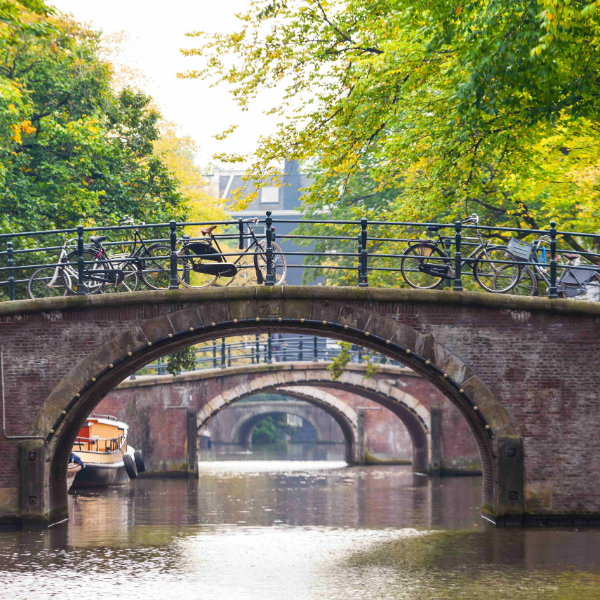Amsterdam
A helping hand towards climate-neutral operations

Amsterdam
The City of Amsterdam is working to achieve climate-neutral operations. This objective encompasses various domains, including mobility, energy and asset management. For the latter of these domains, the municipality commissioned us to carry out the Civil Assets Sustainability Study: a baseline measurement intended to serve as input for the municipality’s strategy and policy to reduce the CO2-eq footprint and raw material use of its assets.
Amsterdam has an impressive portfolio of civil assets, from movable bridges to quay walls, locks and tunnels. New assets must be realised, and existing assets must be maintained, renovated or replaced. These activities lead to CO2-eq emissions. The challenge is to reduce those emissions where possible to help the City of Amsterdam achieve its climate targets.
Detective work
In our study, which focused on all bridges, embankment structures and locks, we mapped out the environmental and climate impact (ECI) and climate impact (CO2-eq). We also studied the material use and probable scenarios for these assets at the end of their service life.
We carried out this exercise in detail for 60 assets, and then extrapolated the results for the entire portfolio of each asset type. We completed the detailed study based on a wide variety of data about the municipality’s civil asset portfolio (AIP; Amsterdam Inspection Portal). Given the age of some structures, we sometimes had to use sketches that were several centuries old. In short, there was a lot of detective work.

Low-hanging fruit
Our study will help the City of Amsterdam to analyse its material use, climate (CO2-eq) and environmental (ECI) footprint of its total civil asset portfolio at the level of individual assets. The guiding principle is that one-to-one replacement (new-built) will not improve the CO2-eq impact, circularity and reuse of materials. The obvious next step is to study alternatives. To achieve this, the municipality has access to information about the most promising opportunities (low-hanging fruit) to reduce CO2-eq emissions and optimise material use at the level of the total civil asset portfolio, individual assets and materials.
Wood construction
Using wood to build cycle bridges can result in a lower CO2-eq impact than building with concrete or steel. Our experts can analyse the technical feasibility and projected environmental benefits of using such materials. This asset-related information is shown on a timeline – from 2024 to the end of the service life – so the municipality can develop plans to make its assets sustainable in a structured way and at specific times to achieve its targets for reducing CO2-eq emissions, environmental impact and reuse.

More information?


